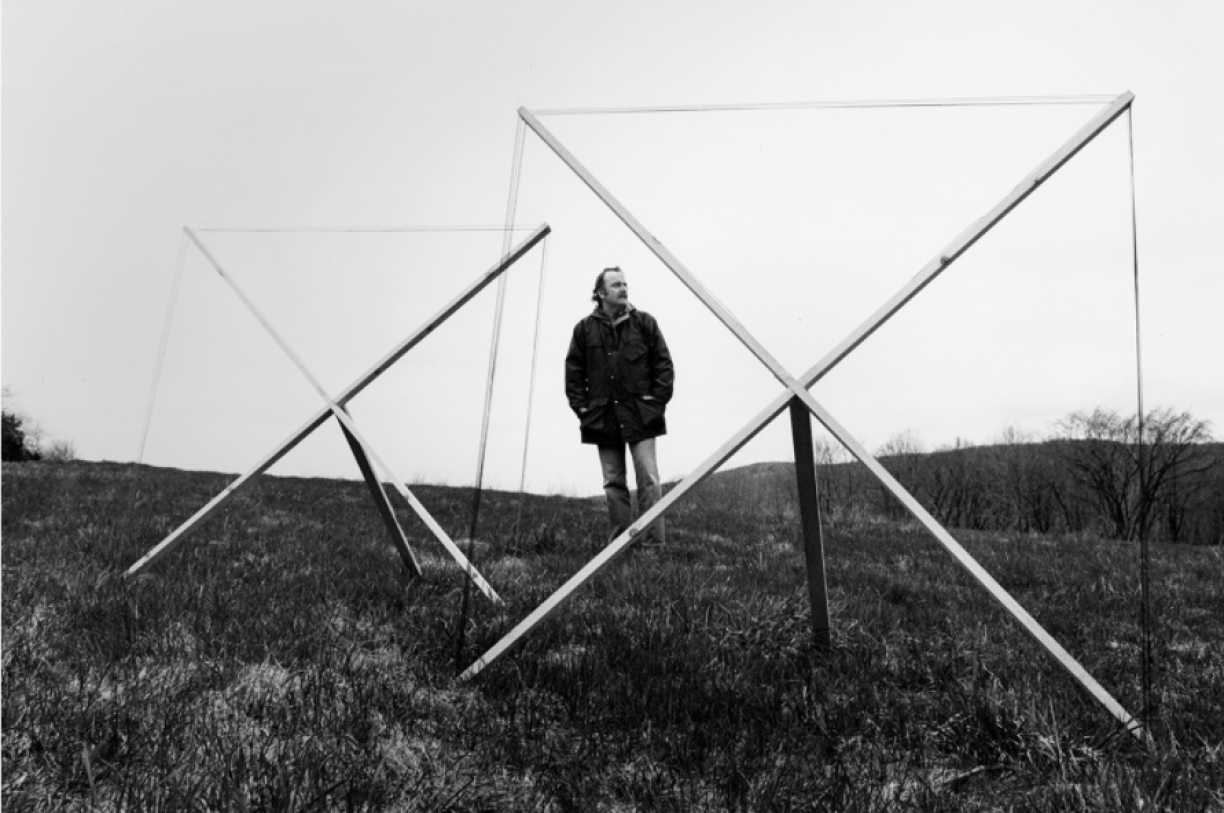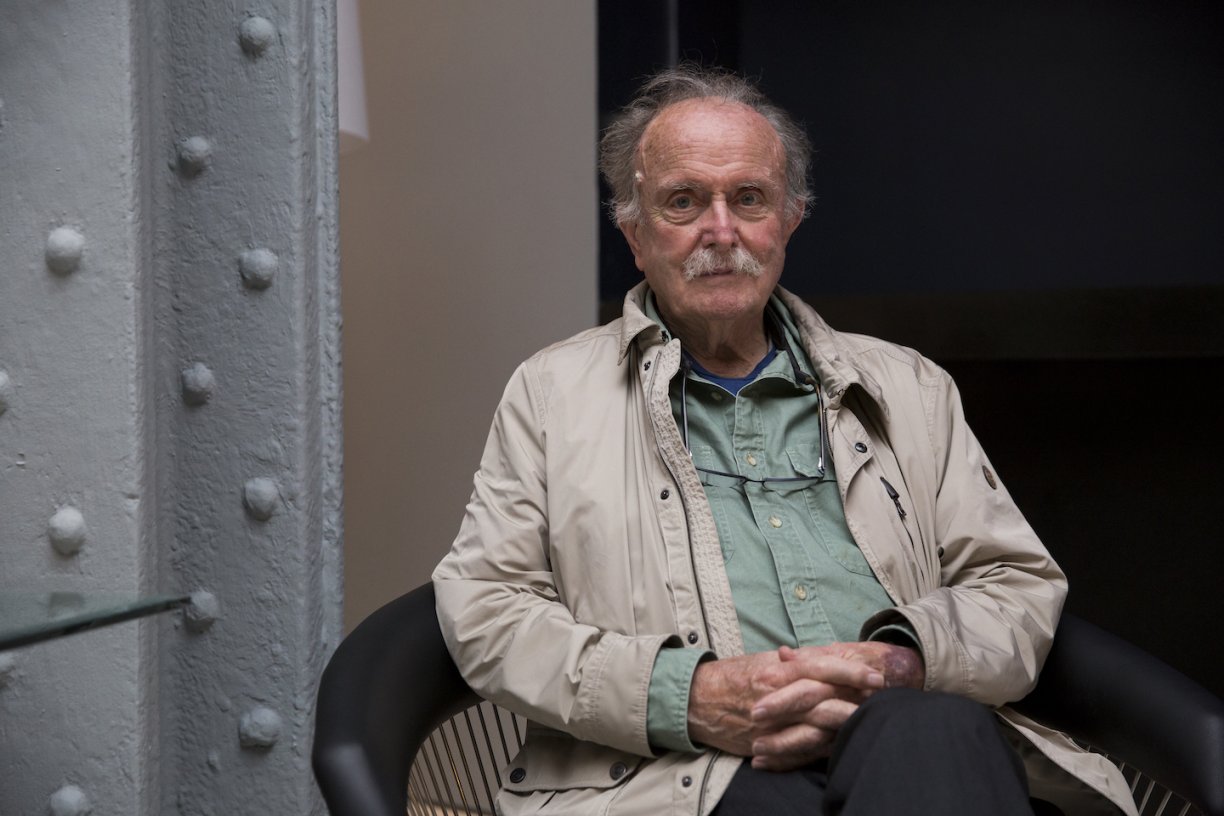Wednesday, November 8th, ISSUE presents the first evening of a two day series observing the work of revolutionist American composer Alvin Lucier in partnership with Zürcher Hochschule der Kunste in Zurich, Switzerland (ZHDK). The occasion intersects both Lucier’s resonant history with ISSUE as well as ZHDK’s recent festival that celebrated Lucier’s 85th birthday.
Held in October of 2016, ZHDK’s festivities were centered around three days of concerts, installations, workshops, and symposiums that featured Lucier and prominent figures such as Joan La Barbara, Charles Curtis, Stephen O’Malley, Oren Ambarchi, Gary Schmalzl, as well as many University students and faculty members spanning the disciplines of composition, music theory, musicology, sound studies, aesthetics, critical theory, and art history. ISSUE presents a crucial New York staging of the 2016 happenings, involving many of its participants, including Joan La Barbara and the University initiated Ever Present Orchestra, an ensemble dedicated to specifically performing Lucier’s work. The series also sees the publication of documents from the festival, including a box set that includes four LPs (12 “/ 180 gram), a CD, as well as a discursive publication of essays, interviews, scientific articles and archival photos edited by Bernhard Rietbrock. Lucier will conduct a signing session of the box set after the concert.
The November 8th program features two recent works both performed by the Ever Present Orchestra, consisting of an ensemble of four guitarists, including Oren Ambarchi, three saxophonists, four violinists, and a pianist. The Orchestra performs Lucier’s 2012 piece Braid and the New York premiere of 2015 piece Hanover. Pioneering composer, performer and sound artist Joan La Barbara also performs the American premiere of Lucier’s Double Rainbow, a new work for voice and oscillator written expressly for La Barbara that saw its world debut in Zurich in 2016.
The evening concludes with Lucier himself staging his seminal 1976 work Bird and Person Dyning, reprising a performance done at ISSUE in 2013 on a program that included the premiere of December 12th, performed by the Ensemble Pamplemousse. Bird and Person Dyning stands as an essential work demonstrating the composer turning inward to the fundamental sparks of aural phenomena. “Dyning” is Lucier’s abbreviated version of “heterodyning,” a term introduced in the early days of radio transmission to describe the phenomenon of two waves mixing in a non-linear medium to produce two extra signals (created with the sum and difference in frequency). Known as “difference tones” in music, the piece tasks the performer to create the tones with an electronic bird call (originally a Christmas ornament producing a chirping sound), and the feedback created by a binaural microphone and stereo system. The emergence of the difference tones, or “phantoms,” depend on the position of the performer in the space and is, uniquely, music where we actually “listen to a composer listening.”
The program observes Lucier’s delicate and lyrical compositional legacy and his enduring engagement with the elusive characteristics of how sound materializes -- with how acoustic mechanics are rediscovered, considered, and performed. Lucier has pioneered many areas of music composition and performance, including the notation of performers' physical gestures, the use of brain waves in live performance, the generation of visual imagery by sound in vibrating media, and the evocation of room acoustics for musical purposes. His sensitivity to sound as a physical phenomenon and his attention to rich aural experience is often practiced through tactical, research-oriented strategies dedicated to contextual listening. A vital figure within experimental music, the compositions of Lucier highlight a general theory of sound, one suggestive of our entangled perceptual position in the sonic world, as well as our attempts to hear the yet-to-be heard.
PROGRAM:
Alvin Lucier: Braid - Ever Present Orchestra
Alvin Lucier: Hanover - Ever Present Orchestra
Alvin Lucier: Double Rainbow - Joan La Barbara
Intermission
Alvin Lucier: Bird and Person Dyning - Alvin Lucier
Since the mid-1960s, Alvin Lucier has produced a range of important compositions that have influenced the culture of experimental music and the sonic arts. Early works such as Music for Solo Performer (1965), Vespers (1968), I am sitting in a room (1970), and Bird and Person Dyning (1975) establish a clear thread throughout his long career. Lucier was born in 1931 in Nashua, New Hampshire. He was educated in Nashua public and parochial schools, the Portsmouth Abbey School, Yale, and Brandeis and spent two years in Rome on a Fulbright Scholarship. From 1962 to 1970 he taught at Brandeis, where he conducted the Brandeis University Chamber Chorus, which devoted much of its time to the performance of new music. In 1966, along with Robert Ashley, David Behrman and Gordon Mumma, he co-founded the Sonic Arts Union. From 1968 to 2011 he taught at Wesleyan University where he was John Spencer Camp Professor of Music.
Lucier lectures and performs extensively in Asia, Europe and The United States. He has collaborated with John Ashbury (Theme) and Robert Wilson (Skin, Meat, Bone). His sound installation, 6 Resonant Points Along a Curved Wall, accompanied Sol DeWitt’s enormous sculpture, Curved Wall, in Graz, Austria, and in the Zilkha Gallery, Wesleyan University in January 2005. Recent instrumental works include Coda Variations for 6-valve solo tuba; Twonings for cello and piano; Canon, commissioned by the Bang on a Can All-Stars, and Music with Missing Parts, a re-orchestration of Mozart’s Requiem, premiered at the Mozarteum, Salzburg in December 2007. In October 2012 Two Circles, a chamber work, commissioned by The Venice Biennale, was premiered there by the Alter Ego Ensemble and in December 2013 a new work, December 12th, was performed by the Ensemble Pamplemousse at ISSUE Project Room, Brooklyn and Firewood, performed in March 2014 by the Bang on a Can All Stars at Merkin Hall, New York. Lucier has recently completed two new chamber works: Orpheus Variations for solo cello and seven wind instruments and Hanover for violin, alto and tenor saxophones, piano, percussion and three banjos. In 2013 Mr. Lucier was the guest composer at the Tectonics Festival in Glasgow, the Ultima Festival, Oslo and gave a portrait concert at the Louvre, Paris, with cellist Charles Curtis. Recent events in 2014 include three evenings of Lucier’s works presented by the International Contemporary Ensemble, in Chicago; two concerts at Roulette, performed by the Callithumpian Consort, as well several concerts at The Tectonics Festival, Reykjavik, Iceland. In October 2014 Lucier was honored by a three-day festival of his works at the Stedelijk Museum, Amsterdam. Reflections/Reflexionen, a bi-lingual edition of Lucier's scores, interviews and writings was published by MusikTexte, Köln. In September 2012 the Wesleyan Press published Lucier's latest book, Music 109: Notes on Experimental Music. In 2013 New World Records released a recording of three of Lucier's orchestra works. Alvin Lucier was awarded the Lifetime Achievement Award by the Society for Electro-Acoustic Music in the United States and received an Honorary Doctorate of Arts from the University of Plymouth, England.
Joan La Barbara is a composer, performer, sound artist, and actor renowned for her unique vocabulary of experimental and extended vocal techniques, influencing generations of composers and singers. Awards, prizes and honors include Foundation for Contemporary Arts John Cage Award (2016); Premio Internazionale “Demetrio Stratos”; DAAD-Berlin and Civitella Ranieri Artist-in-Residencies; Guggenheim Fellowship (2004) and 7 National Endowment for the Arts fellowships, and The American Music Center’s Letter of Distinction (2008) for her significant contributions to contemporary American music. Her numerous commissions include composing for multiple voices, chamber ensembles, theater, orchestra, interactive technology, and soundscores for dance, video and film, including a score for voice and electronics for Sesame Street broadcast worldwide since 1977. Recordings of her work include: ShamanSong, Sound Paintings, Voice is the Original Instrument, Tapesongs, and 73 Poems, which was included in The American Century Part II: Soundworks at The Whitney Museum of American Art. La Barbara is a member of the Music Composition Artist Faculty at New York University and the College of Performing Arts Faculty at Mannes / The New School.
The Ever Present Orchestra is dedicated to the presentation of the exceptional work of the American composer Alvin Lucier. The orchestra attempts to make Lucier’s beating-pattern-focused instrumental music approachable to a wide audience with its uncommon instrumentation of 4 electric guitars, 3 saxophones, 4 violins, and a piano. Along with classical musicians, the presence of prominent Lucier interpreters such as experimental guitarist Oren Ambarchi and Stephen O’Malley from Sunn O))), allows for the ensemble to appeal to a wider audience than the conventional contemporary music scene. The Orchestra was founded by Bernhard Rietbrock after the 85th Birthday Festival of Alvin Lucier at the Zurich University of the Arts, as a part of the Swiss National Research Council project Reflexive Experimental Aesthetics after Alvin Lucier (Reflexive Experimentalästhetik nach Alvin Lucier). Its unusual instrumentation came about as a result of the presentation of the Lucier piece Hannover (2015), originally orchestrated for 3 banjos, 2 saxophones, 1 violin, 1 piano, 1 vibraphone, and newly orchestrated for 3 electric guitars instead of banjos.



